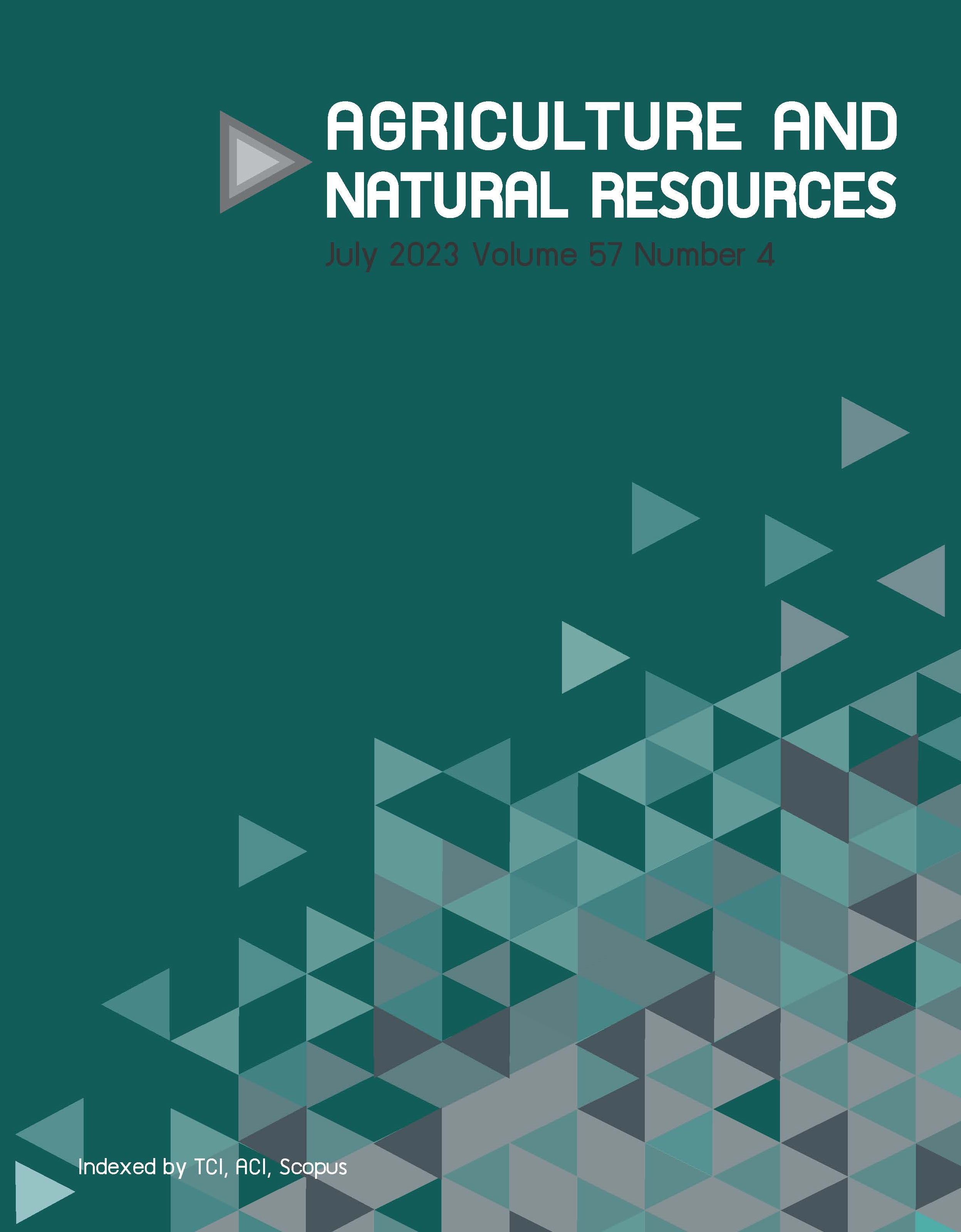Sensitivity tests of dimethomorph, ethaboxam and etridiazole on Phytophthora 7 palmivora causing stem rot and leaf blight of durian in eastern Thailand
Keywords:
Disease control, EC50, Fungicide resistance, Oomycetes, Root rotAbstract
Importance of the work: Phytophthora palmivora is a significant pathogen on durians and has been found to be resistant to metalaxyl.
Objectives: to investigate the sensitivity of P. palmivora to alternative fungicides and evaluate the fungicide efficacy for controlling durian disease.
Materials & Methods: The isolates of P. palmivora were evaluated on fungicide sensitivity to dimethomorph, ethaboxam and etridiazole on culture media against mycelial growth, sporangium production and germination. The representative isolates were determined for fungicide sensitivity on durian leaf tissues. The fungicides with low EC50 values were used for durian disease control.
Results: The mycelial growth of all P. palmivora isolates was sensitive to dimethomorph, ethaboxam and etridiazole with the mean EC50 values of 0.233±0.116 ppm, 0.007±0.002 ppm and 2.945±1.464 ppm, respectively. Sporangium production and germination were also sensitive to all fungicides. The mean EC50 values on durian leaf tissues displayed 0.696 ppm for dimethomorph, 0.089 ppm for ethaboxam and 0.766 ppm for etridiazole. Dimethomorph (100 ppm) and ethaboxam (50 ppm) completely reduced disease development on detached leaves, but etridiazole (50 ppm) showed maximum control of the disease by 55.6%. Only ethaboxam (208 ppm) extremely suppressed the disease in a seedling experiment by 92.3%, while dimethomorph (500 ppm) gave less disease control by 27%. Etridiazole (240 ppm) could not control the disease in seedling conditions.
Main finding: Ethaboxam had the potential to control durian disease caused by P. palmivora in the eastern growing areas of Thailand. Repeat fungicide application should be discussed on dimethomorph and etridiazole.
Downloads
Published
How to Cite
Issue
Section
License
Copyright (c) 2023 Kasetsart Universityonline 2452-316X print 2468-1458/Copyright © 2022. This is an open access article under the CC BY-NC-ND license (http://creativecommons.org/licenses/by-nc-nd/4.0/),
production and hosting by Kasetsart University of Research and Development Institute on behalf of Kasetsart University.







